Exclusive Neuroject Article: The Architecture Engineering & Construction (AEC) field has experienced a digital transformation during the past 20 years. It all began with the adoption of CAD technologies, which transformed the design process by enabling the digital creation of drawings and plans.
Moving forward to the present, completely detailed 3D models of buildings, bridges, and civil infrastructure are now available thanks to the usage of cutting-edge tools like BIM. The construction sector is rapidly transitioning to digital technologies and XR in construction is becoming more popular. This comes as no surprise given that the tools are enhancing workflows and results across the building lifecycle in a much-needed manner.
With the development of technology, reality adopts fresh perspectives on numerous objects, locations, and surroundings. Many different businesses and industries are enhancing, expanding, and promoting their operations by using “reality” technology. XR in construction is transforming how information is consumed and how construction companies interact with it.
By offering a solution that consists of both hardware and software, XR in construction makes it easier for on-site and off-site staff to collaborate. Crews may now see exactly what work needs to be done and receive rapid feedback.
Table of Contents
Introduction
The term “XR” or Extended Reality describes a number of technologies that give people access to knowledge that goes beyond what their normal senses alone can supply. At one end of the spectrum, augmented reality (AR) lets users engage with images their tablet or phone is taking by using a heads-up display. VR represents the other extreme of the spectrum.
In this instance, the entire experience is projected from a helmet, negating the need for any actual physical touch with the environment. The most beneficial technology for contractors is mixed reality (MR), which blends the two.
The physical and digital worlds are combined to create entirely new settings where both can coexist simultaneously. Users can view holographic information from a 3D model superimposed over the actual place to create a “Mixed” reality that mixes real and virtual environments.
Particularly, reality technology appears to hold great promise for the construction industry, XR in construction in enabling teams to work more accurately and confidently throughout planning and construction while also improving communication and collaboration on the job site and in the office.
Suggested article for reading: Virtual Reality in Construction | Augmented Reality in Construction
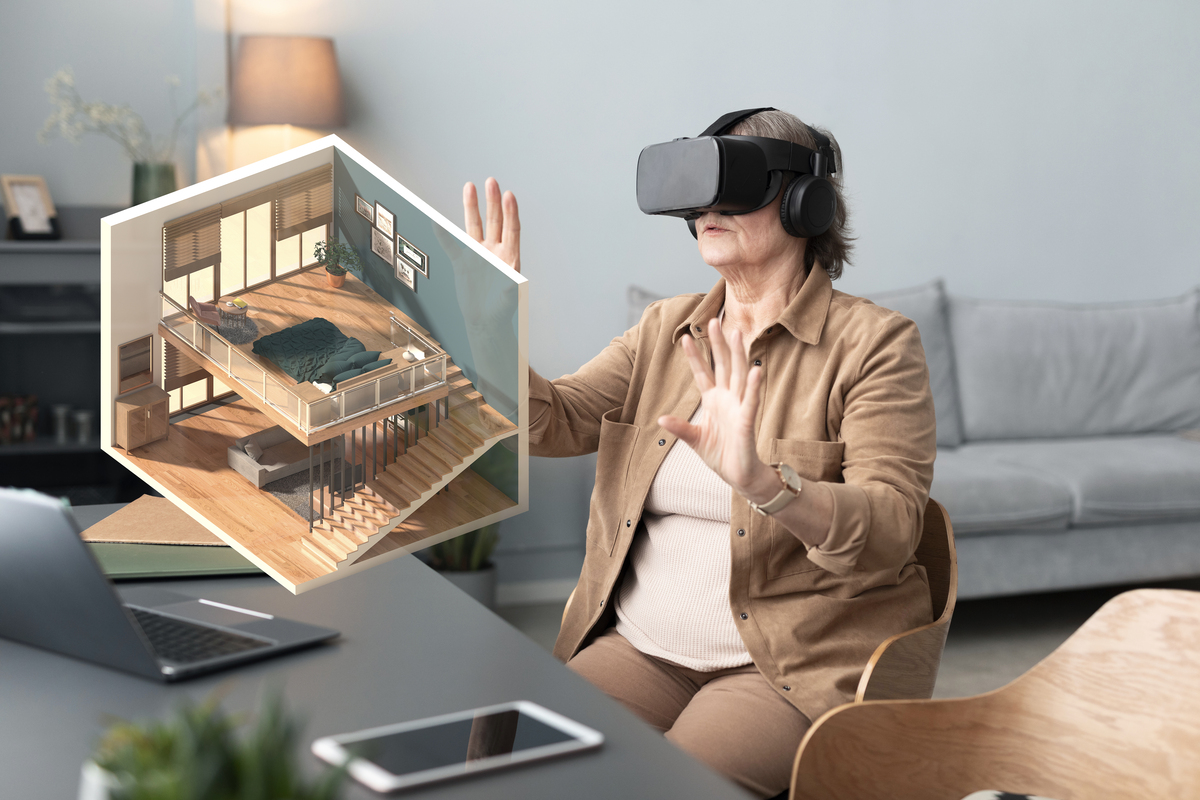
What is XR in Construction?
The complete spectrum of virtual reality technologies is referred to as “Extended Reality.” The move from the fully digital to the actual, physical world (MR) is represented by virtual reality (VR), augmented reality (AR), and mixed reality (MR).
Construction experts must be able to visualize a project’s completion in advance. Extensive and detailed drawings and schematics may now be produced using XR in construction, which enables owners, architects, and general contractors to see a project before any ground is broken.
Previously, only a flat surface could be used to represent a three-dimensional architecture. However, as XR in construction gains popularity, everything is different and provides building specialists with a true 3D model to work with. However, the benefits go beyond the rapid information transfer. Let’s explore the world of XR in construction.
When referring to the whole range of simulation reality technology, the phrase “Extended Reality” is used. The move from the entirely digital to the actual, physical world (MR) is represented by virtual reality (VR), augmented reality (AR), and mixed reality (MR).Extended reality (XR) experiences, which vary from design reviews and digital twins to building rehearsals and high-end pre-visualizations, are advantageous to AEC project teams all over the world.
Using XR in construction can give AEC companies a competitive edge in a field that is fiercely competitive and where success is based on innovation and the customer experience. Additionally, XR can help AEC firms manage very complex data, which is notoriously challenging to collaborate on, especially in distant work environments.
A few potential use cases for XR in construction include customized safety training, safety management, progress tracking, labor management, defect management, energy savings, and knowing end-users’ (occupants’) preferences.
Reality takes on new forms and meanings as technology develops, offering fresh perspectives on a variety of things, places, and surrounds. Utilizing “reality” technology, numerous businesses and sectors are growing, developing, and marketing their operations. Using XR in construction projects helps improve cooperation, adopt lean delivery, and eliminate bottlenecks.
Mixed Reality (MR) in Construction
MR combines physical and digital elements. With the aid of cutting-edge next-generation sensing and imaging technologies, you can now manipulate and interact with both real-world and virtual objects and settings in mixed reality.
You can view and become fully immersed in your surroundings while engaging with a virtual environment with your hands without ever taking off your headset. It enables you to have one foot (or hand) in the real world and the other in a fictional setting, bridging fundamental notions between the two and giving you an experience that could alter the way you play games and carry out your job today.
Through the precise integration of holographic data on the job site via hard hat-mounted devices, mixed reality is advancing the construction industry. This allows for more accurate cooperation and project planning since workers can see their models superimposed on the real world.
Using Mixed Reality (MR), information may be sent to employees on the ground swiftly and securely. In some cases, such as when mixed reality can show the internal composition of a wall, users can draw out digital readings on the physical environment by layering BIM constructs over their actual field of vision. As a result, errors are effectively avoided during construction, and once the building is complete, simple and efficient maintenance is achievable.
The ability to develop a virtual reproduction of what they are planning to construct is unmatched thanks to XR in construction, which gives architects, designers, engineers, project managers, and service providers this ability. They can explore the building and observe how it will appear after it is finished! It sounds wonderful, for sure! Of course, having a virtual tour like this one helps to identify design issues early on and saves a lot of time and money.
The construction sector may experience a change in how information is accessed and used as a result of mixed reality. Using this technology, on-site workers may be taught so they know exactly what to do and can get rapid feedback.
The benefits go far beyond the immediate sharing of information. By utilizing mixed reality, projects can be completed more quickly, at lower prices, with less rework, and with the addition of new workflows like on-site assembly, 4D model-based progress tracking, and even asset management.
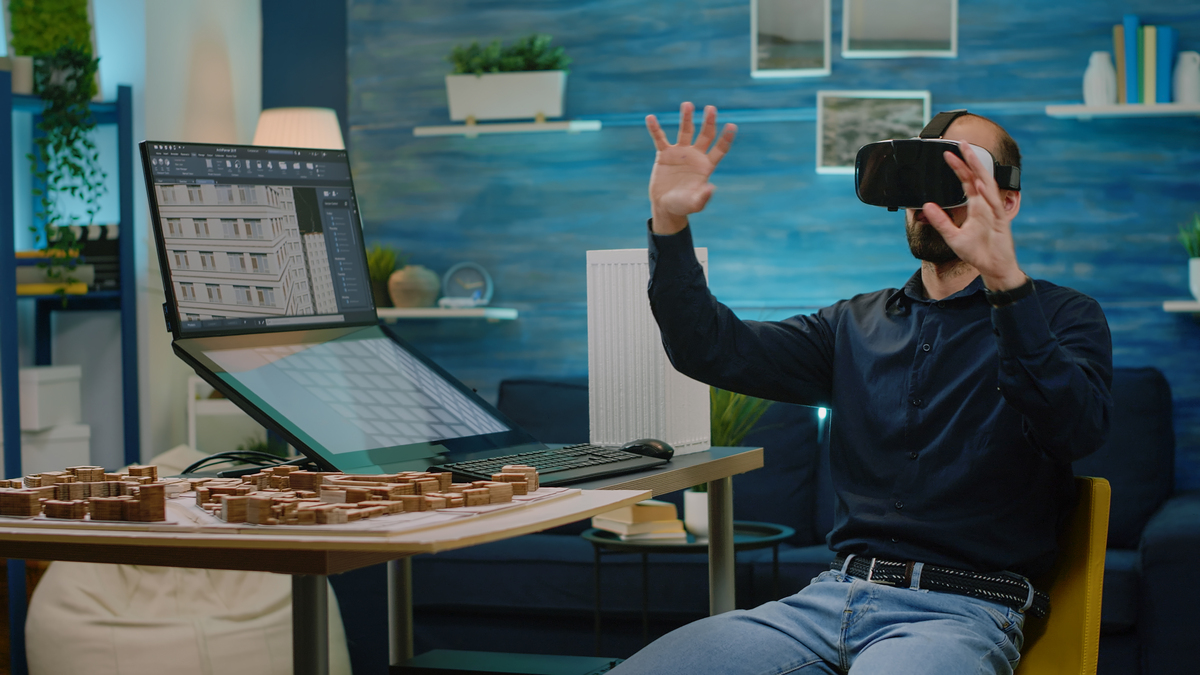
Augmented Reality (AR) in Construction
AR has significant potential for the AEC industry. For instance, architects can implement their ideas in ways that enable others to participate in projects even before they are formally launched. To show how different designs would seem in usage, such as when a new inner wall is added or a different type of flooring is used, digital assets can be superimposed on real-world settings.
AR lowers risk by identifying potential flaws in the early stages of design. There is no denying that designing a space or a building before construction begins has benefits. With the use of AR into project creation, architects and engineers may discover innovative and interesting ways to enhance all processes.
Depending on the phases and departments of a building project, different AR applications are used. Augmented reality (AR) is the most widely used and obvious technology to use in a building project, according to various studies. Undoubtedly, augmented reality will be a key factor for XR in construction industry’s eventual shift to a fully automated sector.
Any user with a smartphone device can use augmented reality technology to bring complicated data sets to the field and display, share, and study them easily in an approachable way, enhancing workflows and communication.
Think about a site meeting, for example. Designers, engineers, contractors, investors, owners, and even non-technical community stakeholders can view a 3D model of a project using the AR application on their own devices. While viewing the model overlay on the actual construction site, people may raise concerns, ask questions, and have issues resolved right away.
Different augmented reality (AR) applications are employed depending on the stages and departments of a building project. Several researchers claim that augmented reality (AR) is the most popular and obvious technology to use in a building project.
Virtual Reality (VR) in Construction
The requirement for architects and designers to anticipate potential problems throughout the planning stages of the construction process is expanding along with the need for construction efficiency. It is also helpful to use virtual reality technology for planning and rendering. It is widely used by developers to examine actual 3D renderings of building plans.
Architects and designers may be able to get a better sense of a location before it is ever created and, as a result, better plan their approach to building it, by mixing BIM technology and immersive VR headsets.
Additionally, businesses may use VR technology to provide a stronger case when bidding on a new project because they can take stakeholders on a virtual tour of the potential site rather than just presenting them with a 2D depiction or model.
Utilizing VR technology, real-time cost estimation models can be produced. Construction site safety and worker hazard recognition skills can both be improved by VR. Safety experts can coach staff members using a range of motion tracking devices as input techniques and produce considerably better results than doing so on-site. These programs provide an excellent learning environment.
Students can participate in remote training scenarios thanks to virtual reality education. Contractors can create new shop drawings and field installation instructions, while owners can commission, test, and maintain equipment via remote instructions. Additionally, owners can fully immerse themselves in the imagined design of a building and witness it come to life.

Use Cases of XR in Construction
Project Management
Many parties with different hardware and software are working on the same project at once during construction projects. These tools are frequently fragmented and out of sync, which raises expenses and wastes time while decreasing effectiveness. The use of interactive 3D environments in XR in construction transforms project management in a sector currently dominated by 2D tools like paper and screens.
According to a case study, using VR for design review and project coordination reduces change orders and mockup expenses by 15% when compared to physical mockups. Through the use of digital twins and VR, stakeholders can explore the project in a collaborative setting. This improves coordination, communication, and collaboration even when participants are not present physically. Like their physical counterparts, these virtual models are also simpler to share and update.
By using XR in construction, users can alter digital building designs on-site and overlay modifications onto the actual building. Before they are implemented, errors on the virtual building models can be fixed, reducing guesswork and preventing waste.
Project Planning
By allowing designers and architects to test ideas and enhancements before construction, XR in construction eliminates the need for guesswork. Prior to real attempts, these intricate models may ensure that client expectations are satisfied, which can save businesses a ton of money on development and revision expenditures. Because it offers spatial insights without requiring the purchase of tangible resources, virtual reality is the best tool for building planning.
Building projects necessitate the installation of auxiliary systems like electricity and plumbing. By putting structural components on top of each other, AR aids parties involved in the construction process:
- Obtain measurements
- Prevent clashes
- Guarantee proper placement
- Ensure integration
- Increase collaboration
So XR in construction contribute to a precise building design with exact labor and material budgets.
By providing step-by-step visual instructions that can be accessed via mobile or mounted devices, AR solutions are particularly helpful in developing instructions and guidelines for field employees. Complex building operations are made simpler for field workers by seeing the finished product and the machinery used, which reduces the learning curve.
According to a study, individuals who used immersive VR performed reviews more successfully than those who used desktop computers, with an average score rise of 70%.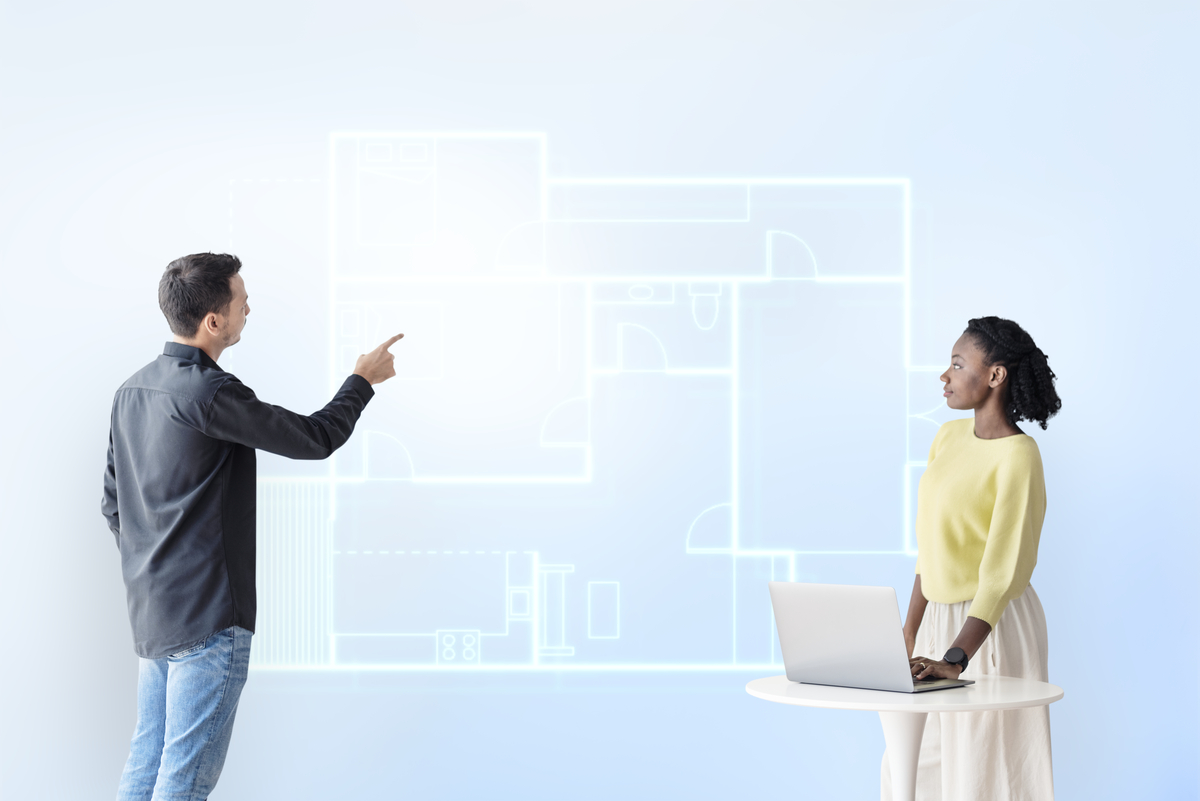
Construction Site Layout
Current site layout design techniques could miss possible issues like collision detection or safety risks, which would reduce the project’s effectiveness and raise the risk of liabilities.
The success of the project as a whole is closely related to the efficient design of the construction site. Before building begins, stakeholders can address potential opportunities and liabilities by modeling and planning the site in a virtual environment. The site’s productivity and efficiency can be increased by experimenting with various designs and options by means of XR in construction.
Field workers can access on-site information using AR technologies in real-time, viewing layered building details like:
- Walls
- Pipes
- Ventilation
- Outlets
- Overall project progress.
That VR-assisted site planning enable participants to anticipate the reality of the site conditions and constraints by providing greater analysis and knowledge of various project site scenarios.
Worker Safety Training
Due to the nature of the work and the workplace, the construction industry can be risky, which highlights the need for safety laws and knowledgeable employees. With the help of XR in construction, employees may train in true-to-life virtual worlds, lowering the danger of injury while providing them with space for error.
As was already mentioned, the site can be designed before using XR in construction. VR site design is advantageous for workplace safety since it allows for the early identification and mitigation of potential risks. For construction companies, ensuring safety requirements cuts costs and saves time. When compared to large-scale in-person training, VR-based safety training is more affordable thanks to the increasing accessibility of XR in construction.
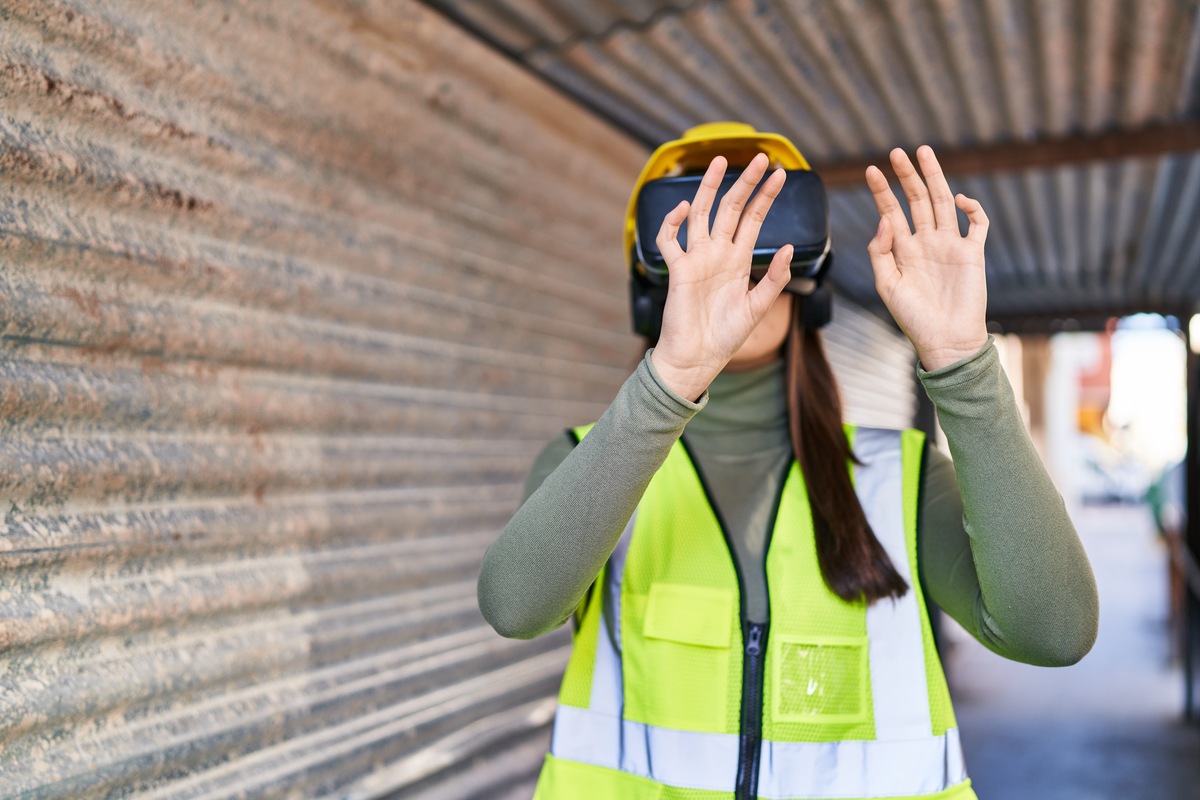
Client Engagement
There is often a gap between the two sides because clients don’t always have the opportunity to assess projects that are already underway or in the design phase. For clients who wish to keep informed about the project, provide feedback, or experiment depending on their specific needs, the use of XR in construction offer interactive, effective, and immersive experiences. Virtual reality makes nonexistent spaces visible so that clients may explore them and direct designers. The company’s resources can be saved if the client and the planner are on the same page.
The construction of a hospital in Finland made use of XR construction, allowing the employees to take virtual tours and provide input as early as the design phase. The input from the workforce led to adjustments in the design and prevented more costly alterations or redesigns in the future.
Take Digital to the Next Level with XR in Construction
When consumers are first exposed to XR in construction industry, they often have a “wow” moment. However, they quickly learn how user-friendly the tools are and how to apply them to a variety of apps and workflows to provide genuine, quantifiable gains. To keep up with and compete in the construction sector, a shift in employee thinking and organizational culture is required. By doing the following, the usage of XR technology can promote and help develop a digital mindset among the workforce:
- Enabling workers of all ages to utilize cutting-edge digital tools to better do their jobs and acquire new, useful skills.
- Facilitating practical training in a safe and efficient manner.
- Utilizing technology and familiar to workers principles of digital sharing to enhance communication and collaboration.
XR technologies are an excellent entry point to other cutting-edge technologies that can further enhance communication, productivity, safety, and profitability by resolving the visualization challenge in construction and assisting teams and stakeholders in achieving a common project understanding. A robust digital culture will emerge spontaneously if employees recognize the benefits and simplicity of digital tools like XR in construction.
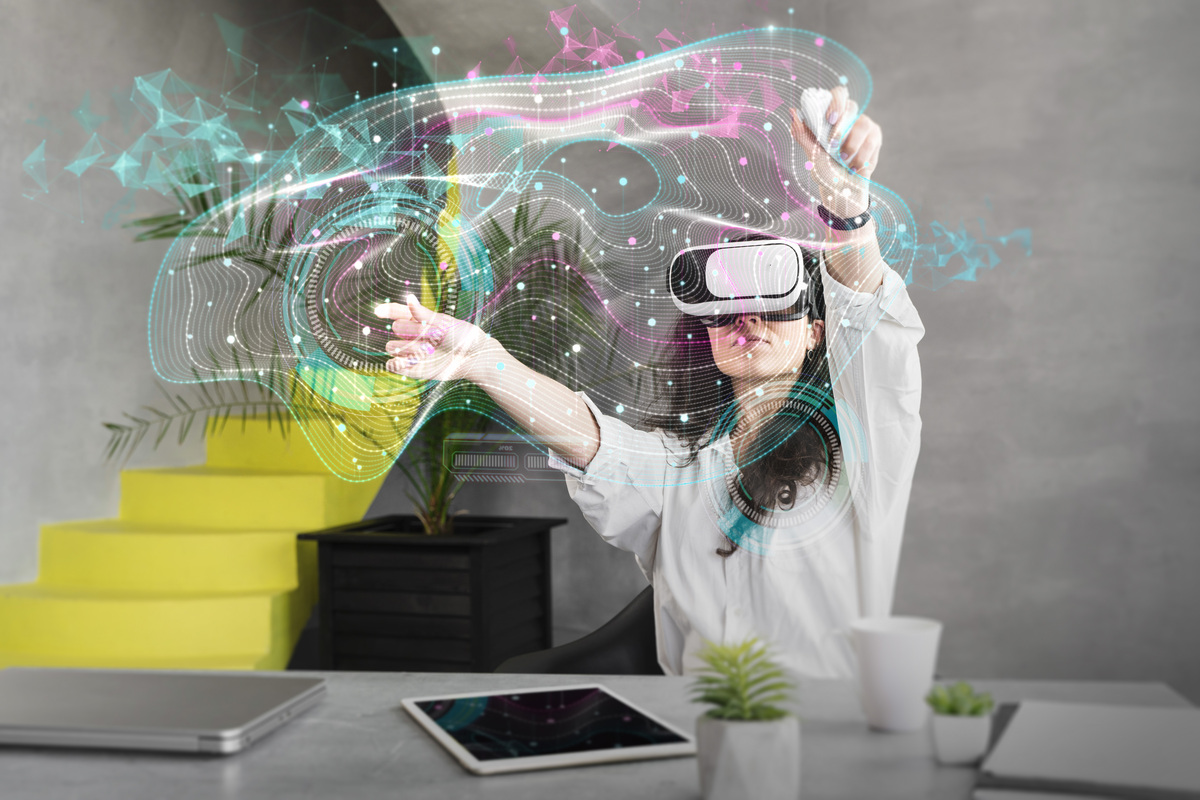
XR in Construction Case Studies
Varjo and Sellen Construction
Sellen Construction, a top general contractor in the Pacific Northwest, was looking for a fresh approach to fostering collaboration among architects, engineers, builders, and everyone else involved in a building project. XR in construction may be the ideal way to speed up decision-making among specialists, shorten lead times, and inform clients of final outcomes.
Sellen Construction turned to Varjo and its immersive virtual reality headsets after testing a wide range of VR solutions. The company claims that because of the excellent image quality, consumers actually felt as though they were in an other universe.
Microsoft and the Haas Group
The Haas firm has created practically every type of building a buyer may imagine in prefabricated forms, from single-family houses to opulent villas and business headquarters. Since its founding in 1972, the business has expanded quickly, and it now employs about a thousand competent people worldwide.
Unfortunately, outdated technologies limited a lot of the administrative procedures that the Haas group established. The process of changing designs in response to client requests took a lot of time and money. As a result, the business concluded that it needed to update its technology and turned to Microsoft for help. It’s simpler to give everyone a complete image of what a project will look like and make quick modifications with the Microsoft ecosystem and the HoloLens 2 headgear.
Unity and DPR Construction
The length of time it takes to remedy design or installation problems after they are discovered in the field is one of the largest obstacles most AEC companies face. Rework costs the US construction industry upwards of $65 billion annually. Fortunately, XR in construction technologies are starting to gain favor among contractors.
One of the top ten contractors in the ENR market, DPR Construction, adopted technology from Unity, Microsoft HoloLens, and VisualLive to improve project planning opportunities and teamwork. Employees can use the solution to virtually experience BIM models on the job site and find problems before construction even starts.
DPR Construction’s solution has enabled the business to cut down on the costs associated with having to fix and rectify issues after a project has already been completed.
Magic Leap and VIM AEC
When it comes to contractors and clients in the AEC industry, there is frequently a big difference between the models and blueprints that are developed in two dimensions and the final product. While XR in construction is thought to have more value than virtual reality since it may link the actual and virtual worlds, some businesses find virtual reality to be a terrific choice.
In order to develop a new service for AEC firms, Magic Leap collaborated with VIM AEC, a business that specializes in improving the accessibility of BIM files used by construction businesses. Together, these businesses have created a novel method for viewing VIM files on Magic Leap hardware and integrating content into the physical environment.
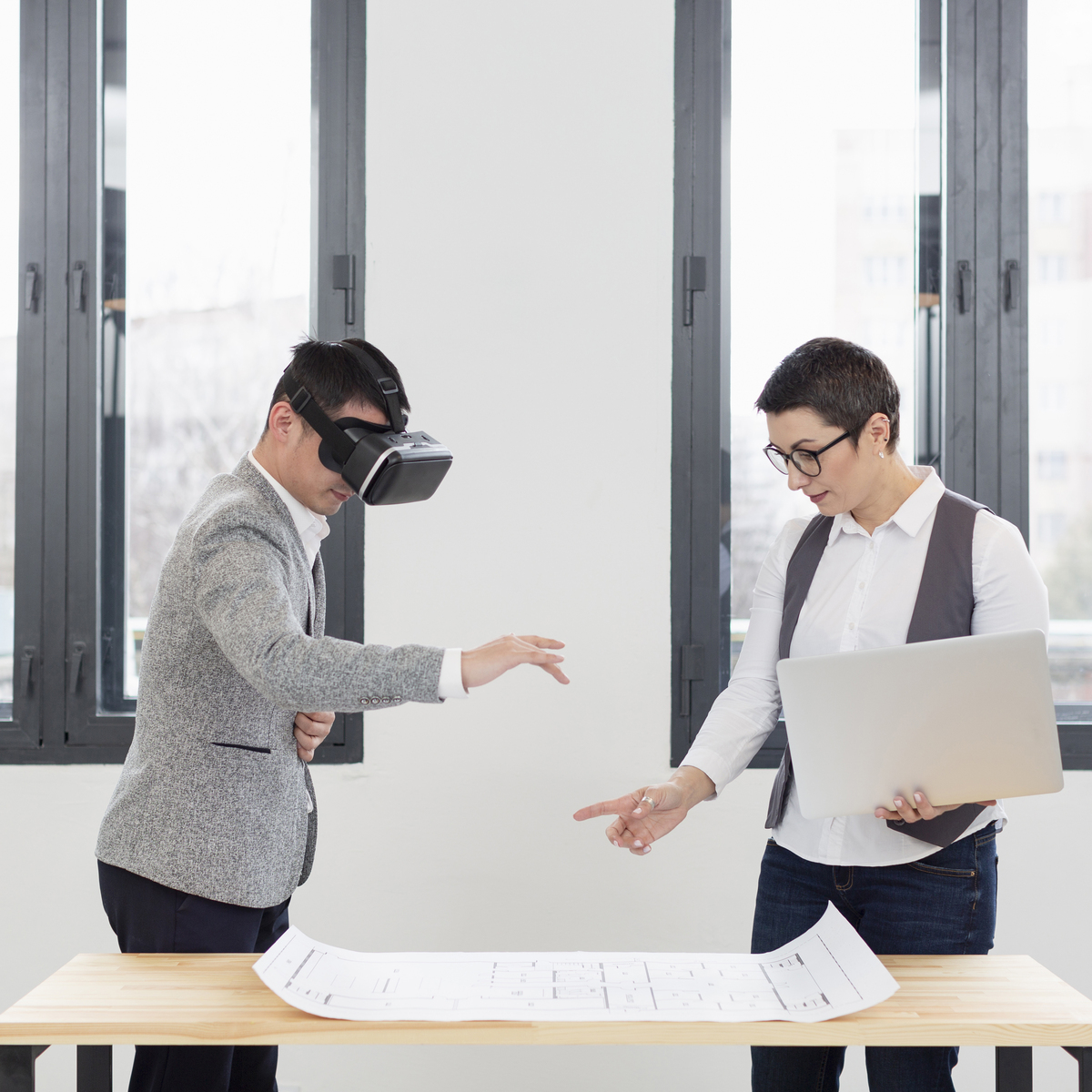
Autodesk to Boost its XR (Extended Reality) Capabilities
Virtual reality, according to Autodesk, can help boost employee resilience and remote cooperation, both of which have significantly increased in the wake of the worldwide epidemic. Through the use of technology, XR in construction provide a way to keep teams connected and projects moving forward despite physical distances and constantly shifting travel limitations.
For a number of reasons, according to Autodesk, the company is investing in XR, including:
- Resilience – As a result of the worldwide pandemic, there is a much greater demand for improved workforce resilience and distant collaboration. XR in construction offer a method to electronically keep teams together and projects moving despite physical distances and constantly shifting travel restrictions.
- Accessibility and affordability – Prior until now, many consumers were unable to afford professional-grade VR/AR technology. The ability of XR is now accessible to anyone, everywhere, at any time because the majority of smartphones now enable AR and headsets cost a few hundred dollars rather than thousands.
- Sustainability – Face-to-face meetings frequently require exorbitant travel, which unnecessarily produces damaging carbon emissions. In addition, teams that are unable to come together to resolve design challenges usually end up with expensive rework and severe material waste. Utilizing efficient, fast, and immersive cloud communication, teams may save time, money, and resources.
What is the Future of XR in Construction?
The global XR in construction market is estimated to reach $14848 million by 2024, assuming a CAGR of 71.3% from 2018 to 2024. The building market’s adoption will play a large role in this growth story. Such statistics are not at all surprising given the various benefits that this amazing technology provides. As it becomes more widely employed, this technology will soon take the place of other tools used in construction projects.
A crucial technology for digital construction, building information modeling (BIM), is already a popular topic. Together with the wonders of XR in construction these benefits of BIM offer a more realistic view of the building’s structure, enabling the early identification of issues and the creation of more dependable designs.
The efficiency of the construction business has increased thanks to the use of XR in construction technologies. Using digital content to enhance physical realities allows project teams to work more correctly and rapidly, make better judgments more quickly, collaborate and communicate more effectively, and so on.
Although XR in construction has many uses, each technology is similar to any other tool in that it has some considerations and works best in specific situations. You may choose which technology to use when and where by understanding the differences between virtual, augmented, and mixed reality.
By bringing data and designs to life, virtual reality, augmented reality, and mixed reality solutions, whether utilized in the field or the office, quickly make digital content understandable and usable for every user or stakeholder.
Early adopters and adapters of Extended Reality technologies, such as virtual reality (VR), augmented reality (AR), or mixed reality (MR), in the AEC industry are ready to upend many international industries.
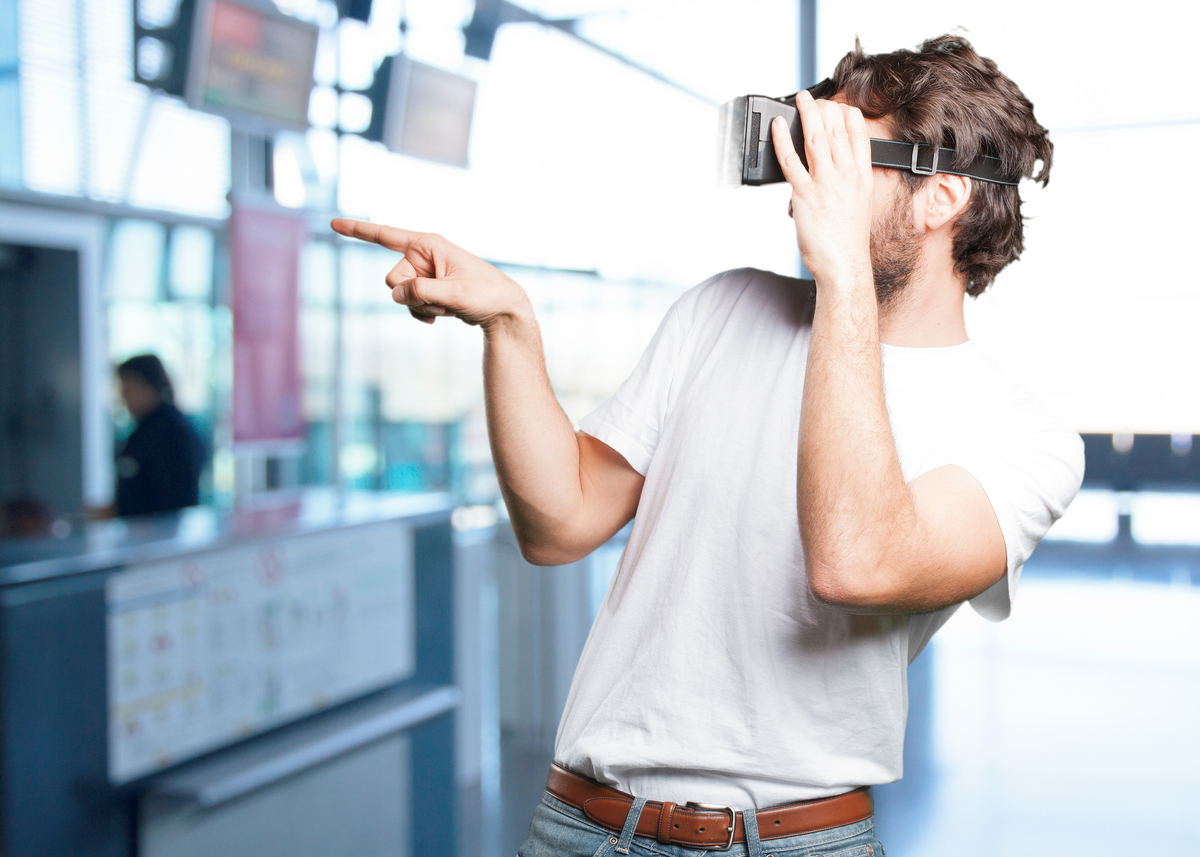
Conclusion
People will be able to engage in the refurbishment process more effectively thanks to the close connection between the physical model and the XR in construction. The findings of an experiment on a domestic renovation show that the virtual-real interaction system can increase the efficacy of public engagement in the remodeling. Users can design in a 3D environment on-site using straightforward physical model manipulation as opposed to communicating design intent through conventional professional drawing files.
This system facilitates real-time collaboration and communication between experts and laypeople by enabling comparison of design concepts through an intuitive presentation and interaction mechanism. It also supports real-time interaction between virtual scenes and actual objects. However, we think that our discoveries might make it easier for users to be involved in the early planning stages of remodeling projects by using XR in construction.
XR in construction will be taken to the next level by:
- Making the physical and virtual worlds more interactive. Enhance physical and virtual interaction technologies to boost user engagement. As an illustration, consider adding more interactive features (such zooming and manipulating the model), adding tools for annotation so users can offer comments and suggestions, and creating virtual-physical two-way real-time feedback capabilities.
- Using the BIM platform for collaborative design. The BIM platform may incorporate all relevant project information. Participatory design techniques that include BIM data can offer more practical answers for challenging remodeling projects.
- Intelligent techniques that process enormous amounts of data quickly, like genetic algorithms and machine learning, used to participative systems that let users make design decisions decisions.
- Distance communication: Build out the network mechanism that enables sharing between numerous XR devices the same hologram to accommodate several users collaborative interaction over distance.
Suggested article for reading:
important construction technology in 2024
World’s Best Modern Architecture Buildings
Resources: XR today | Work Max | 3D Walkabou | Emerald | Trimble | AImultiple | Indovance | MDPI | Unity | View port
books and journals:
- Li J, Tian Lo T, Guo X, Chen F, Integrating XR and Tangible Model to Enhance Old Building Renovation Design 2023
- Casini, M. Extended Reality for Smart Building Operation and Maintenance: A Review. Energies 2022, 15, 3785
For the pictures: Freepik



